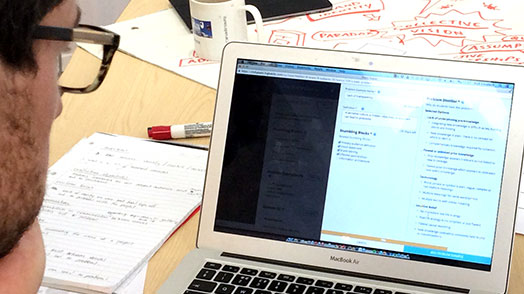
Then, input the specific student problems alongside the main Stumbling Block that they are linked to. A student problem may be linked to more than one Stumbling Block. In this case, draw a line connecting the student problem to additional Stumbling Blocks where necessary. Through discussion, and with the aid of the Problem Distiller, capture why they are problems.
In this way, practitioners get a complete picture of their Tricky Topic, its Stumbling Blocks and the associated problem examples alongside insights into why these are problems for students.
This is the end of stage 2, the Capture process and practitioners are ready for the Assess stage.


